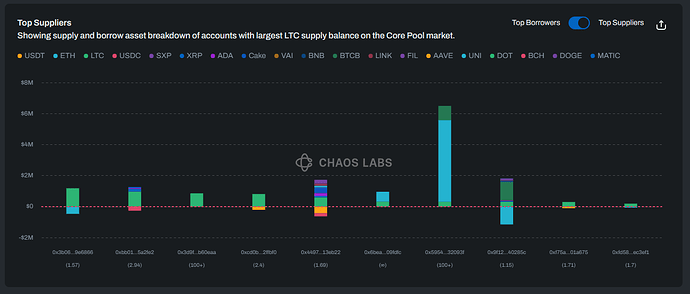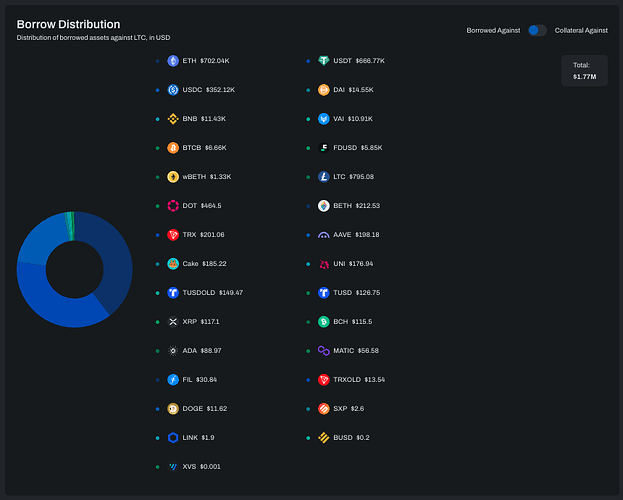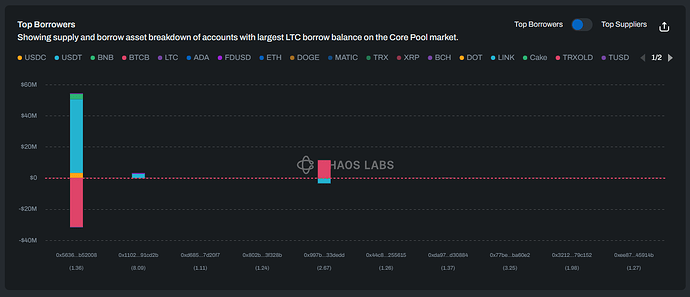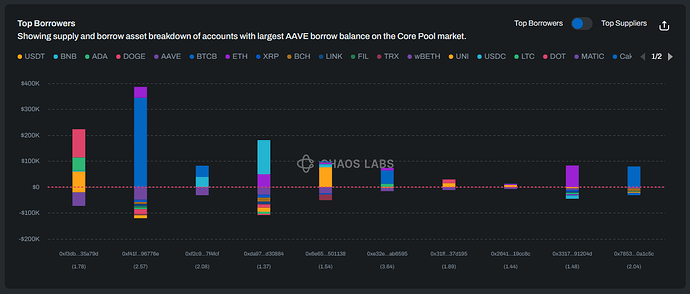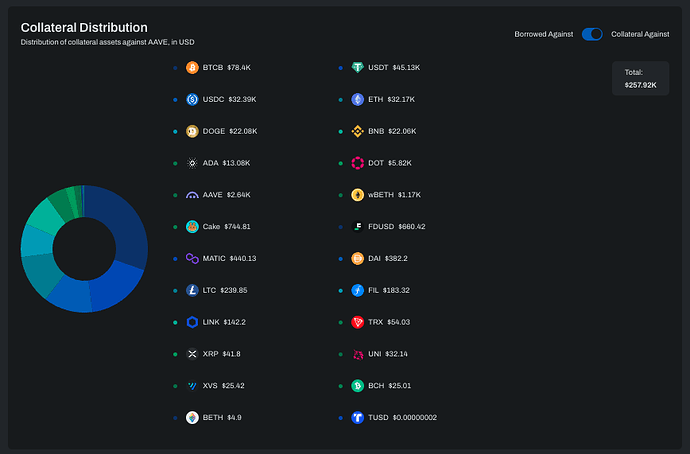Summary
A proposal to:
- Increase LTC’s supply and borrow caps on Venus’s BNB Core deployment.
- Increase AAVE’s borrow cap on Venus’s BNB Core deployment.
Motivation
LTC (BNB Core)
LTC has reached 81% supply cap utilization and 100% borrow cap utilization following a surge of new borrows.
Supply Distribution
LTC is used as collateral for various assets, with the largest position being used to borrow ETH. There is no significant concentration in this market, and all top positions have differing health scores, reducing the likelihood of liquidation cascades. In the position with the lowest health score (1.15), LTC represents only a minimal share of the collateral, while BTCB, the other collateral used, is highly liquid.
Overall, ETH and Stablecoins are the most popular assets borrowed against LTC, representing 39% and 58% of the value borrowed, respectively.
Borrow Distribution
The borrow cap has been hit following a user borrowing LTC against a previously open long USDT and BNB, short BTCB position. The LTC in this position represents a relatively small percentage of the total, at just over 1% of the total value borrowed.
Overall, the borrow positions in this market do not pose a significant risk, as USDT is the primary collateral asset and is highly liquid on BNB Chain.
Recommendation
Given the high variety of collaterals used together with LTC, and the small size of the LTC borrows, we recommend increasing the supply cap to 240,000 LTC and the borrow cap to 20,000 LTC. This increase is backed by Chaos Labs’ risk simulations, which consider the user’s behavior, on-chain liquidity, and price impact, ensuring that the higher cap does not introduce additional risk to the platform.
AAVE (BNB Core)
AAVE reached 80% borrow cap utilization, while it has fallen slightly to 53% supply cap utilization.
Borrow Distribution
Borrows of AAVE are highly distributed, with no significant user or collateral concentration in the market. The riskiest position still maintains a very safe health score of 1.37. As a result, the top positions present a limited risk to Venus.
Overall, BTCB represents 30.3% of the collateral used to borrow AAVE, followed by USDT and USDC.
Recommendation
Given the distribution of borrows, the borrow cap can safely be increased by 50%. This increase is backed by Chaos Labs’ risk simulations, which consider the user’s behavior, on-chain liquidity, and price impact, ensuring that the higher cap does not introduce additional risk to the platform.
Specification
| Market | Asset | Current Supply Cap | Recommended Supply Cap | Current Borrow Cap | Recommended Borrow Cap |
|---|---|---|---|---|---|
| BNB Core Pool | LTC | 120,000 | 240,000 | 10,000 | 20,000 |
| BNB Core Pool | AAVE | 20,000 | - | 2,000 | 3,000 |
Disclaimer
Chaos Labs has not been compensated by any third party for publishing this recommendation.


